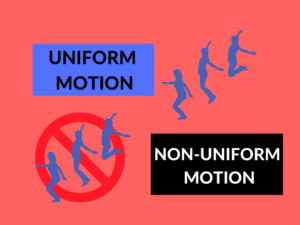Difference between Acceleration and Retardation
It is essential to understand the concepts of acceleration and retardation as they play a significant role in the field of physics. Whether you are interested in motion, mechanics, or simply curious about how things work, this article aims to provide a comprehensive understanding of the differences between acceleration and retardation.
What is Acceleration?
Acceleration refers to the rate at which the velocity of an object changes over time. It can be described as the change in velocity per unit of time. Acceleration can occur in various forms, including increasing speed, decreasing speed, or changing direction.
Examples of Acceleration:
1. A car speeding up on a highway.
2. A soccer ball being kicked into the goal.
3. A rocket taking off into space.
4. A bicycle negotiating a turn.
Uses of Acceleration:
1. Motion in vehicles: Acceleration is crucial for moving vehicles from rest or changing the speed while driving.
2. Sports: It plays a vital role in activities like sprinting, jumping, and throwing.
3. Engineering: Acceleration is essential for designing machines, spacecraft, and airplanes.
4. Physics: Acceleration helps in understanding the behavior of objects in motion.
What is Retardation?
Retardation, also known as deceleration or negative acceleration, refers to the rate at which an object slows down or decreases in speed. It occurs when the velocity of an object changes in the opposite direction to its initial motion.
Examples of Retardation:
1. A car applying brakes to stop.
2. A ball rolling up a hill and slowing down.
3. A parachute opening, reducing the descent speed.
4. A cyclist gradually decreasing speed before coming to a halt.
Uses of Retardation:
1. Vehicle Safety: Retardation is crucial for implementing braking systems in cars, trains, and airplanes.
2. Traffic Control: Retardation helps control and slow down vehicles at intersections, roundabouts, and speed bumps.
3. Sports: Athletes use retardation techniques to quickly reduce their speed and change direction.
4. Engineering: Retardation is essential for designing safety mechanisms in elevators, escalators, and amusement park rides.
Differences between Acceleration and Retardation:
| Acceleration | Retardation | |
|---|---|---|
| Change in Velocity | Velocity increases | Velocity decreases |
| Motion Type | Can result in motion in any direction | Always opposite to the initial motion |
| Effect on Speed | Speed can increase or decrease | Speed always decreases |
| Resultant Force | Usually produces a forward force | Produces a backward force (opposite to motion) |
| Symbol | a | -a or d |
| Units | m/s² | m/s² |
| Graph Representation | Positive slope | Negative slope |
| Relation to Time | Direct relation with time | Inversely related to time |
| Energy | Can be associated with both kinetic and potential energy | Primarily associated with a loss of kinetic energy |
| Example | A car accelerating from 0 to 60 mph | A car slowing down to stop at a red light |
Conclusion:
In summary, acceleration and retardation are two opposing concepts in physics. Acceleration refers to the increase in velocity, while retardation represents the decrease in velocity. Acceleration can lead to various types of motion and is associated with both positive and negative effects. On the other hand, retardation is always opposite to the initial motion and primarily associated with reducing speed. Both concepts are crucial in understanding the behavior of objects in motion and play a significant role in various fields, including automotive, sports, engineering, and physics.
People Also Ask:
1. What is the difference between acceleration and deceleration?
Acceleration refers to any change in velocity, including both increasing and decreasing speed, while deceleration strictly refers to the decrease in speed.
2. What are some real-life examples of acceleration?
Some real-life examples of acceleration include a car accelerating on a highway, a sprinter running faster, a ball falling towards the ground, and a plane taking off.
3. Can retardation result in negative velocity?
Yes, retardation can result in negative velocity when the object’s initial motion is in the positive direction and its velocity decreases to zero and continues in the opposite direction.
4. Is there any difference between deceleration and retardation?
No, deceleration and retardation are essentially the same concept, referred to as the reduction in speed. Both terms are often used interchangeably.
5. How are acceleration and retardation calculated?
Acceleration and retardation are calculated by dividing the change in velocity by the time taken. The units for acceleration and retardation are meters per second squared (m/s²).


